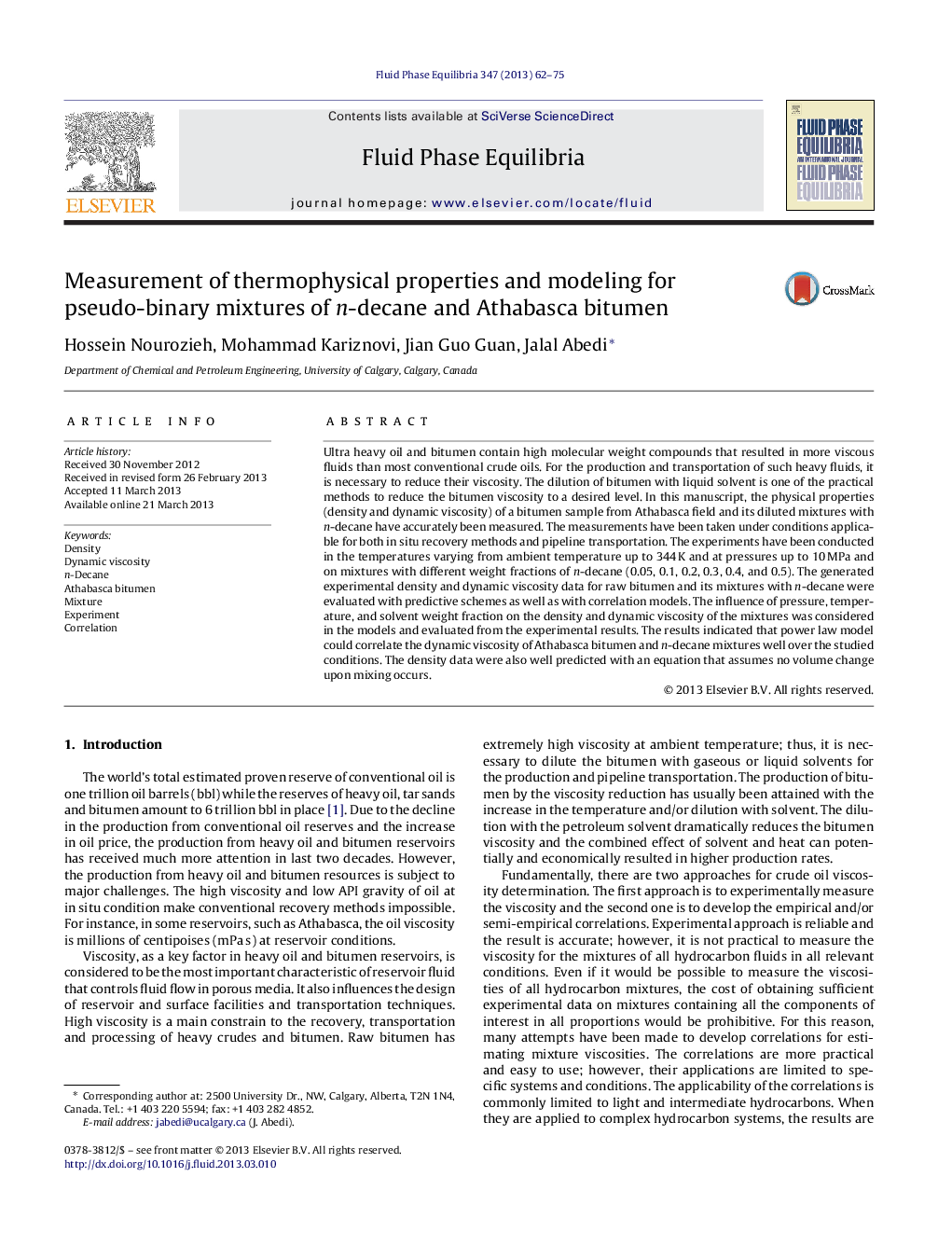| Article ID | Journal | Published Year | Pages | File Type |
|---|---|---|---|---|
| 203641 | Fluid Phase Equilibria | 2013 | 14 Pages |
•Density and viscosity of Athabasca bitumen and its diluted mixtures with n-decane.•Temperatures varying from ambient temperature up to 343 K and at pressures up to 10 MPa.•Pseudo-binary mixtures with (0.05, 0.1, 0.2, 0.3, 0.4, and 0.5) weight fractions of n-decane.•Power law model could correlate the viscosity of Athabasca bitumen and n-decane mixture well over studied conditions.•Density data were also well predicted with an equation that assumes no volume change upon mixing occurs.
Ultra heavy oil and bitumen contain high molecular weight compounds that resulted in more viscous fluids than most conventional crude oils. For the production and transportation of such heavy fluids, it is necessary to reduce their viscosity. The dilution of bitumen with liquid solvent is one of the practical methods to reduce the bitumen viscosity to a desired level. In this manuscript, the physical properties (density and dynamic viscosity) of a bitumen sample from Athabasca field and its diluted mixtures with n-decane have accurately been measured. The measurements have been taken under conditions applicable for both in situ recovery methods and pipeline transportation. The experiments have been conducted in the temperatures varying from ambient temperature up to 344 K and at pressures up to 10 MPa and on mixtures with different weight fractions of n-decane (0.05, 0.1, 0.2, 0.3, 0.4, and 0.5). The generated experimental density and dynamic viscosity data for raw bitumen and its mixtures with n-decane were evaluated with predictive schemes as well as with correlation models. The influence of pressure, temperature, and solvent weight fraction on the density and dynamic viscosity of the mixtures was considered in the models and evaluated from the experimental results. The results indicated that power law model could correlate the dynamic viscosity of Athabasca bitumen and n-decane mixtures well over the studied conditions. The density data were also well predicted with an equation that assumes no volume change upon mixing occurs.
